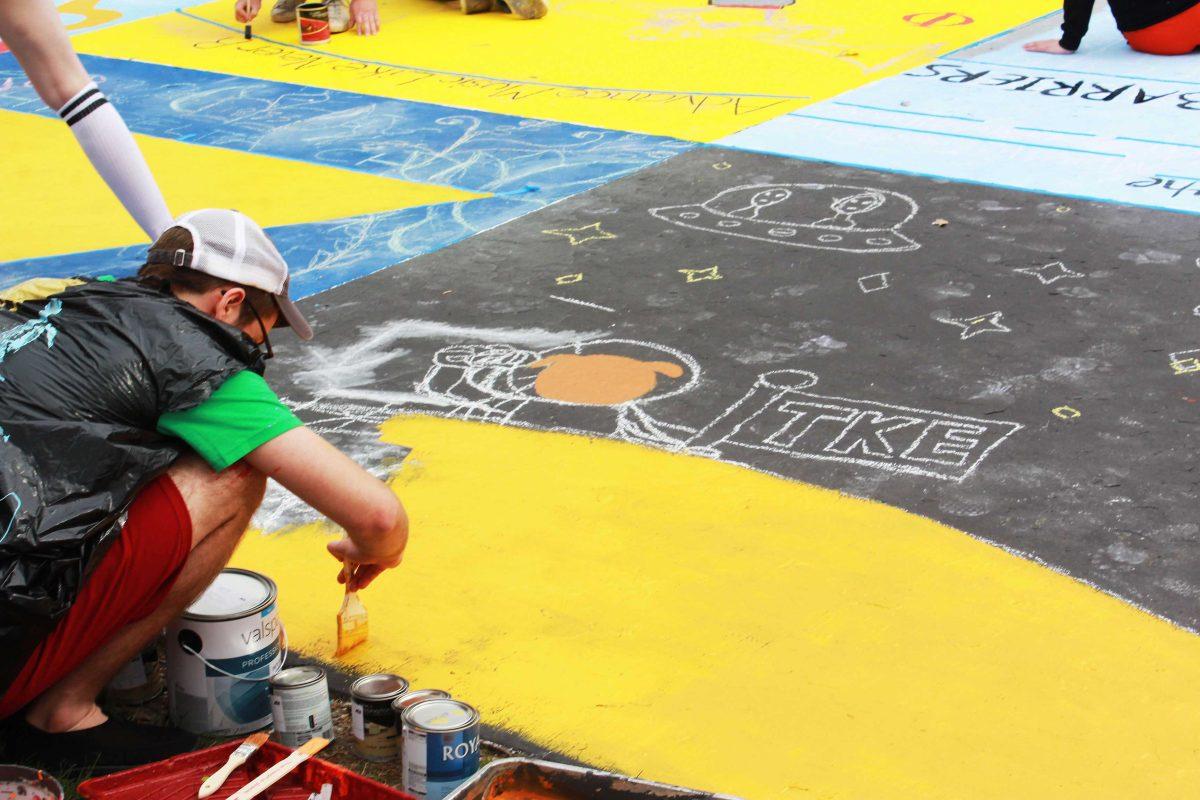Painted Street: important representation for multicultural groups
by MADELEINE LEIGH
Painted Street, one of the biggest annual events at Drake University, was cancelled due to the COVID-19 pandemic. Student Activities Board (SAB) president Joanna Drake says SAB may move Painted Street to the fall 2020 semester, but it is still unclear what will happen next for the event.
Yet, for two student organizations—La Fuerza Latina (LFL), the latinx student group, and Rainbow Union, the LGBT student group—participation in any future street painting event is clearer than ever after some recent decisions.
It all stems from a controversy that occurred during Painted Street 2019.
Luke Miller, former president of Rainbow Union, remembers being excited about his organization’s design for Painted Street 2019, which commemorated the 50th anniversary of the Stonewall Riots. But after submission and revision, something went wrong.
“SAB said ‘I’m sorry, you’re not getting a square this year.’ And that’s it,” Miller said. That’s the communication we got from them. We’re upset!”
Miller then publicly posted a tweet criticizing SAB’s choice to exclude Rainbow Union from Painted Street 2019.
Angelica Reyes, current president of LFL, says members of the organization discussed Rainbow Union’s situation at length.
“Painted Street is so significant when students visit,” Reyes said. “To not have an organization like [Rainbow Union] on that street…it’s kind of like a slap to the face.”
After reaching out to Rainbow Union, LFL decided to include the LGBT group in its square.
“We decided to incorporate kind of a rainbow flag to represent [Rainbow Union] but also keep our design so it’s just a combination of both communities,” Reyes said. Only, LFL did not inform SAB of the changes beforehand.
LFL’s decision to deviate from their submitted design violated SAB’s rule prohibiting organizations from painting a design deviating from its original submission.
Former SAB President Giada Morresi said those rules exist for good reason. Mainly, the fact that organizations’ painted designs stay up for the whole year and are seen by current and prospective students alike.
“So, we really have to be careful that what [SAB approves] is actually done,” Moressi said. “Worst case scenario, if something vulgar…is put down on the street, the responsibility of that falls back onto SAB and the students, and ultimately onto the University.”
Although LFL’s square was allowed to remain as-is in 2019, SAB banned LFL from submitting its own design for Painted Street 2020 as punishment for violating the rules.
That ban has since been lifted by SAB after the postponement of Painted Street 2020. But the underlying tensions about the representation of multicultural groups on Drake University’s campus remain.
Reyes agrees that SAB’s rules for Painted Street were fair but felt Rainbow Union’s specific situation was not. LFL decided representing Rainbow Union was more important than SAB’s rules or any potential punishment.
“We kind of were willing to sacrifice our square because we think that it’s more than just a square,” Reyes said. “We can’t just be the type of organization that lets other multicultural organizations like Rainbow Union not be represented in a proper way.”
LFL wasn’t the only organization that broke SAB’s rules for Painted Street last year. Student Senate also deviated from its submitted design and was banned completely from participating in Painted Street 2020, as SAB’s rules lay out.
Yet the unequal treatment of Student Senate and LFL did not strike LFL or Rainbow Union as unfair. Some members of LFL and Rainbow Union feel representing multicultural organizations on Painted Street is more important than representing other types of organizations.
Brynn Yetzer, current president of Rainbow Union, described the difference between multicultural and other organizations at Drake University
“Multicultural groups are about a fundamental aspect of who you are, and the other groups on campus are more about interests,” Yetzer said. “There’s nothing wrong with that, that’s also very important. I don’t want to discount that at all.”
Yetzers emphasized that the main difference here lies in people’s perception of the campus.
“There’s a difference between visiting a campus and saying, ‘Oh, there isn’t a chess club here, that sucks,’ and visiting a campus and seeing, ‘Oh, they don’t really like gay people here.’ That’s a much bigger deal.”
Yetzer feels Painted Street is a particularly important part of that representation because it serves as a kind of symbol for Drake as a whole.
“It’s important for students of color or LGBTQ students or any and all minority group students to see that they have a place here,” Yetzer said. “That they’re represented; they’re seen. And not just at Drake, but in the world.”







